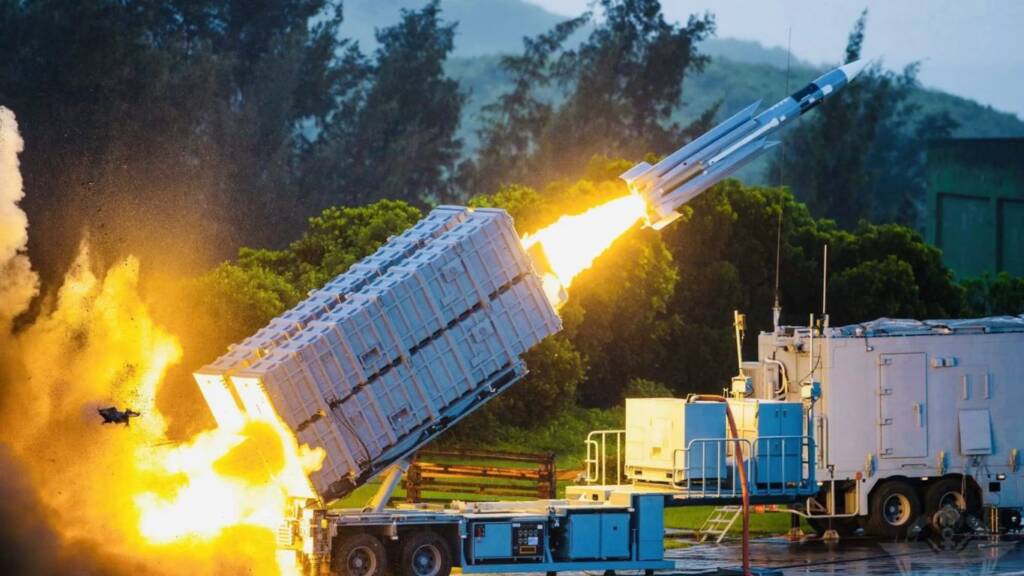Taiwan has launched a new military asset: the Qingtian hypersonic cruise missile. The weapon can travel at a speed of over Mach 6 and hit targets at distances of over 2,000 kilometers. It is an expression of Taiwan’s strengthened will to defend its sovereignty against an increasingly aggressive China.
Qingtian is capable of much more than being another weapon for Taiwan. It represents a leap in modern warfare: the most unmatched speed combined with the greatest precision. Mass-produced in late 2024, the Qingtian builds on earlier missile programs like the Yunfeng and Yungeng II but raises the stakes by incorporating advanced propulsion, navigation, and guidance technologies. These innovations make the Qingtian particularly difficult for adversaries to intercept. Taiwan has deployed this advanced weapon in response to the increasing military threats from Beijing and as a deterrent against further Chinese aggression.
The Qingtian Missile: Taiwan’s Technological Edge
The Qingtian missile will be a game-changer in Taiwan’s defense strategy. The missile can strike deep into the mainland, targeting strategic military hubs and command centers, and make a strong statement to Beijing. Hypersonic missiles are faster than Mach 5; thus, their interception by present missile defense systems is virtually impossible. Taiwan is not just trying to protect itself but instead aims to deter China. By showing them its technological strength, Taiwan sends a message: any move that China will make against Taiwan will indeed be very expensive.
The Qingtian can also be launched from a fixed or mobile platform, making Taiwan’s missile capacity unbreakable even if there is a first strike. In order to enhance its mobility, Taiwan would opt for using Czech-made Tatra Force trucks and American-made Oshkosh M983 as mobile launchers. Its flexibility would not easily allow China to strike effectively against Taiwan’s missile systems. It would only add another level of resilience to Taiwan’s defense strategy.
A direct answer to China’s aggression
Taiwan’s developments have largely been the result of provocations from the Chinese side. China’s incessant mock blockades and invasion threats mean Taiwan has been under intense pressure in the region. Such rehearsals are nothing but a campaign of psychological intimidation, and it could also break its economy.
Taiwan has invested in the Qingtian missile as part of its broader military modernization program that seeks to check the growing military power of China in the region. For the past years, Taiwan has undertaken significant upgrades of its air and naval forces. For instance, Taiwan has ordered 66 F-16V fighter jets to enhance its air defenses against the growing Chinese air force.
In addition the modernization of Taiwan’s navy was undertaken with renovated Kang Ding-class frigates and home-built submarines that are developed to enhance their maritime power. Its defense budget has gone up from $15.3 billion in 2022 to $19.9 billion in 2023 and is scheduled to reach $20.8 billion by 2028. The expenditures demonstrate Taiwan’s intent to raise its military force into an effective system to ensure the survival of its state against a growingly unfriendly China.
China’s Unchecked Aggression
The aggressive posturing of China against Taiwan has contributed immensely to the instability in the region. The government of Beijing claims Taiwan to be its province. President Xi Jinping has only made the tone even more militant in his pronouncements and in terms of military posturing. Peaceful reunification, according to Xi, is a talk; otherwise, his acts convey otherwise. Militaristic movements near Taiwan—including simulation of blockades, amphibious attacks, and entering Taiwanese airspace repeatedly—more or less outline Chinese intentions, which are far from peaceful.
This aggressive behavior is actually counterproductive, as it only emboldens Taiwan to remain independent and work on its security. Taiwanese President Lai Ching-te has been an outspoken advocate for peaceful dialogue with Beijing, but the Chinese government has ignored those overtures, instead using more forceful tactics. Hypocrisy is clearly at play—Beijing proclaims to be seeking peaceful reunification, yet its military actions are suggestive of a strategy of conquest. These tactics have received little support in Taiwan and instead have hardened the island’s resolve to resist Chinese domination.
The Qingtian missile is merely one aspect of Taiwan’s overall defence strategies. The island is improving its missile capabilities in addition to developing strategic alliances with American forces, Japanese forces, and Australian militaries. Collective military exercises and higher cooperation have allowed Taiwan to grow more self-assured about its prospects in the face of Chinese pressure.
Apart from modernizing its weapons systems, Taiwan is looking at other avenues by improving cyber defenses, enhancing intelligence-sharing networks with allies, and readying itself to face threats of all kinds. This all-rounded approach is in keeping with Taiwan’s understanding that survival in a world where China is hell-bent on its expansionist designs looking at Taiwan with the intentions of taking over the entire island.
